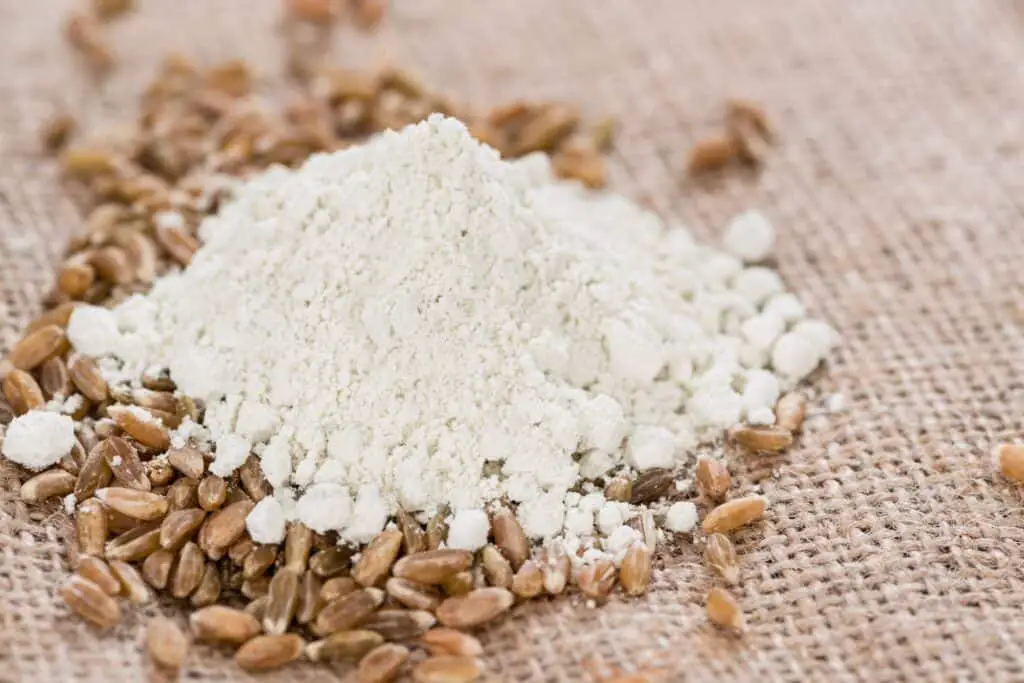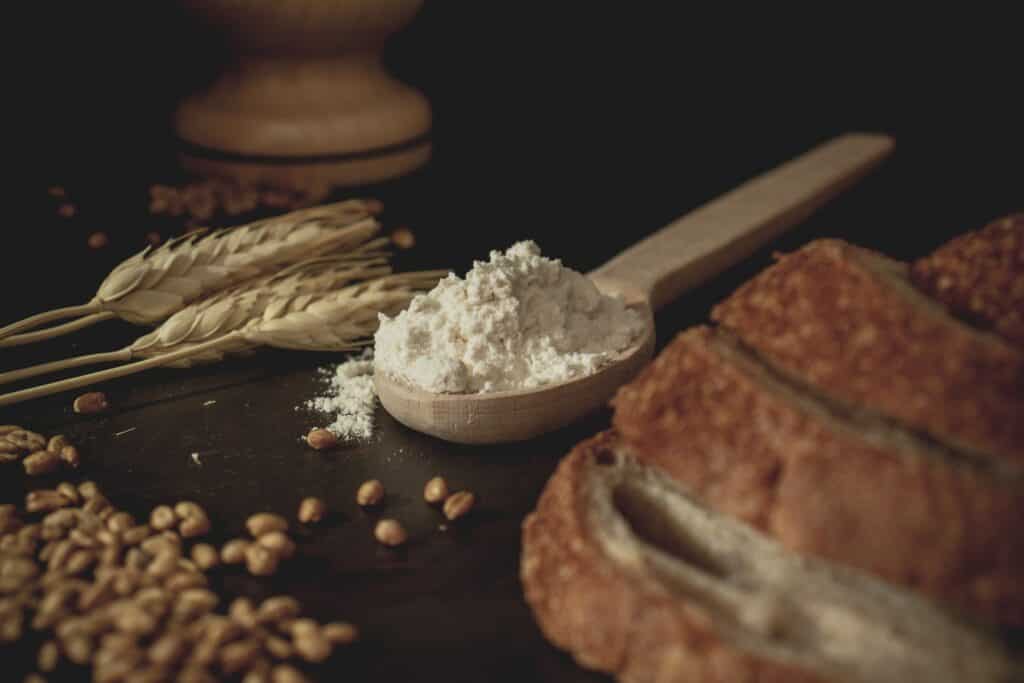Spelt flour has been around since the Bronze Age. It is a type of wheat first cultivated in Germany and is now grown throughout Europe, Canada, South America, Australia, and North America. It can be made from organic or non-organic varieties of this grain.
What is Spelt Flour?
Spelt is a type of grain that belongs to the wheat, barley, and rye family. Its official name is Triticum spelta and, not surprisingly, it is made from spelt grain. The spelt grain has a higher protein content than other types of grain, which gives it a more chewy texture. Spelt has a similar nutritional profile to wheat, so like wheat, spelt contains gluten and is not ideal for someone on a gluten-free diet. The whole spelt is a high-carb and fiber food. Fiber has been linked to better health. Therefore, for most people, whole grains, such as the whole spelt, are considered to be very nutritious.

Is Spelt Flour Better than Regular Flour?
Certain things make spelt flour better than regular wheat flour. Spelt has a higher protein content, and it is also a high-carb food.
Regular Wheat Flour
Spelt is also a good source of fiber, which has been linked to better health. For these reasons, spelt may be a better choice for some people than regular wheat flour.
All-Purpose Flour
This flour has higher protein content and is less in calories when compared to all-purpose flour.
White flour
Some people believe that spelt is healthier than white flour because it contains more protein and fiber. However, others find that the two flours are very similar in their health benefits.
Is Spelt Flour Healthy?
Spelt is a rich source of minerals and vitamins, making it an ideal choice for health-conscious people. In addition, it is a fiber-rich flour and offers many health benefits, such as:
Good For Digestive Health
This flour is high in fiber, which is good for digestive health.
Maintains Blood Sugar Levels
The fiber in spelt slows down the conversion of carbohydrates into sugars so you can maintain optimal blood sugar levels.
Fiber-Rich
Spelt flour contains both soluble and insoluble fibers that help keep your body healthy by regulating bowel movements and improving heart health. Insoluble fiber helps sweep waste and toxins from the digestive system, and soluble fiber helps lower bad cholesterol.
Whole Grain Benefits
Spelt is a whole grain, so it can help you lose weight by keeping your stomach feeling full for longer periods, which means that you eat less at mealtimes. Eating more whole grains like spelt may also reduce your risk of developing heart disease and type II diabetes.
Is Spelt Flour Gluten-Free?
Spelt contains gluten, so it is not suitable for someone who has celiac disease or needs to follow a strict gluten-free diet or has gluten sensitivity. Some people with mild sensitivities can tolerate this flour but may experience side effects such as bloating and flatulence when eating this type of wheat.
Anyone with celiac disease has a serious condition that requires them to follow a gluten-free diet, and in such conditions spelt flour can lead to inflammation in the small intestine. While gluten in this flour is lower than gluten present in conventional wheat, it is still not recommended for people with non-celiac gluten sensitivity and celiac disease.

Historical Background of Spelt Flour
Known as farro or dinkel, spelt is a wheat sub-species that dates back to ancient times. Spelt has been grown in the Middle East for over 7000 years and was cultivated by Egyptians, Greeks, and others before that. Native to Iran and other parts of Europe, It is said to be one of the earliest varieties of wheat used to produce bread.
Spelt Trivia
Saint Hildegard Von Bingen, a medieval saint, and Doctor of Church, is mentioned in medieval European text supporting spelt as a therapeutic and healing food. Spelt is one of the earliest cultivated forms of wheat, and it has been an essential part of folk medicine since ancient times.
How is Spelt Flour Made?
Spelt is a very old grain, and it is considered the ancestor of modern bread wheat. The spelt seeds are harvested from plants after their hull has been removed, so they do not have any outer covering. The grains must then go through a process called pearling, in which the bran is removed. After this, the spelt can be used in many ways, including being made into flour, pasta, bread, and other baked goods.
Is Spelt Flour Made From Organic Wheat?
Spelt is also an organic food grain that comes from organically grown wheat, so it contains no additives or preservatives.
Taste of Spelt Flour
Spelt has a nutty taste, making it an excellent choice for baked goods. It is also not as sweet as all-purpose or wheat flour, giving recipes made with spelt more depth and texture. However, this type of flour has different baking properties than regular wheat flour, so it is important to follow recipes that have been specifically designed for spelt.
What Does Spelt Flour Smell Like?
This flour has a mild and pleasant aroma which is slightly nutty in flavor. Wheat flour typically smells like bread, but spelt has a more delicate scent.
Substitutes of Spelt Flour
If you are looking for a substitute for spelt flour, there are several options that you can try. You can use other types of wheat flour, such as whole wheat pastry flour or all-purpose gluten-free flour mix. Oat flour is also a good option, and it gives baked goods a slightly sweet taste. Rice flour can be made into a substitute by adding other ingredients like tapioca starch. Other options that you can substitute include buckwheat, amaranth, or teff.
To summarize, spelt has been used for millennia and is a healthy and nutritious grain. It is an excellent choice for people who want to reduce their risk of developing heart disease or type II diabetes. This flour has a nutty taste and smell, and it can be substituted for other types of wheat flour in recipes. When baking with spelt, it is important to follow recipes that have been specifically designed for this type of flour.
Thanks for reading!
